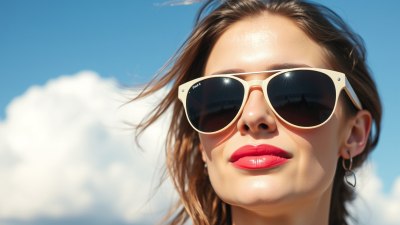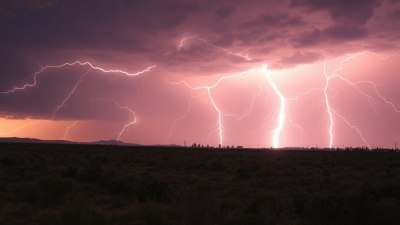What Your Sunglasses Would Say if They Were Honest About the Weather
Discover what your sunglasses would really say about the unpredictable weather and how it impacts your daily style and comfort.

Image created with Flux Schnell
Have you ever wondered what your sunglasses might say if they could speak honestly about the weather? We often rely on those tinted lenses to shield us from glaring sun rays, but the truth about the weather they experience is often a complex mix of unpredictable conditions. Sunglasses are more than just a fashion accessory; they’re a protective shield and a silent witness to the ever-changing atmospheric moods. If they could talk, what stories would they tell us about the weather we've faced lately?
The Sun’s Unpredictable Mischief
Let's start with the obvious: the sun. Sunglasses adore sunny days because that's when they truly shine—literally and figuratively. When the bright yellow orb bathes the sky with warmth and light, sunglasses get to play their primary role by reducing glare and enhancing comfort. But what if the sun is anything but consistent? When the sun plays hide and seek behind the clouds, sunglasses feel somewhat redundant. They imagine themselves like superheroes waiting eagerly for the call to action but get left twiddling their nose bridge in boredom.
Imagine your sunglasses revealing their frustration on days when the sky is mostly gray and overcast. “Come on!” they might say, “I’m designed for these glorious sun rays, not for dull, flat light! I want to help you see vibrant colors, not dull shades of grey.” Oh yes, to sunglasses, clear blue skies are like a personal invitation to perform their best.
Rain or Shine? Sunglasses’ Tough Love for Weather Ambiguity
Rain is a tricky subject for sunglasses. On one hand, they prefer to stay dry and safe from water droplets. On the other, some sunglasses come equipped with water-repellent coatings that are an absolute blast to use in light drizzle or mist. But genuine honesty from your eyewear might reveal something else: a slight disdain for rainy days. “Why do you even bother wearing me when the sky is crying?” they might tease. But the truth is, some advanced lenses do help in rainy conditions by cutting down glare from wet surfaces, so they do have their moments of glory come drizzle or downpour.
Windy days often leave sunglasses a bit disgruntled as well. Dust and debris can threaten their pristine lenses, and many people ditch them to avoid smudging or scratching. “Hey, I’m trying to protect your eyes here—don’t toss me aside because the wind messes your hair up,” sunglasses could protest. They rely on your care to keep functioning well, no matter the weather’s mood.
The Secret Life of Polarized Lenses
Polarized sunglasses especially have a lot to say about the weather. Designed to reduce reflections from water, snow, and glass, these lenses are the true champions of glare reduction. On bright, sunny days at the beach or snowy winters, polarized lenses come alive. They might say, “Bring on that sunshine and reflective glare; I’m ready to make your vision crisp and comfortable.” However, their specialty is also their weakness in low-light situations. In dim or foggy weather, polarization can make it harder to see, leading to an honest confession: “I love sunlight — but without it, I’m less useful.”
Sunglasses and Seasonal Mood Swings
One of the more poetic things sunglasses might admit is their allegiance to the seasons. Spring and summer? They’re in their element, basking in the glory of brighter skies and longer days. Autumn and winter? They admire the soft light but sometimes feel sidelined. “I miss the days when your environment called for me every time you stepped out,” they’d say wistfully. The shorter daylight hours and frequent cloud cover of winter mean less time on the bridge of your nose and more time tucked away in a case.
Yet, winter has its surprising moments when sunlight reflects off snow in dazzling patterns that only sunglasses can handle with finesse. Sunglasses take pride in protecting your eyes from snow blindness and intense UV reflections during those crisp days. So, even in the coldest months, they have quiet moments of satisfaction.
How Sunglasses React to Sudden Weather Changes
The weather is famously capricious. It can change from bright and sunny to dark and stormy in minutes. Sunglasses, had they a voice, might grumble, “You put me on expecting sunshine, and suddenly we’re battling rain clouds! How am I supposed to keep going?” This unpredictability is a challenge for anyone relying on them for visual comfort and eye protection.
People often choose sunglasses based on the forecast, but the reality is that weather can defy predictions. Sunglasses might suggest keeping a versatile pair handy or switching between lenses with different tints depending on the weather. Darker lenses for sunny days, lighter yellow or amber ones for overcast skies. “I’m happier when I can adapt,” they’d admit.
The Unseen Battle Against UV Rays
One of the sunglasses’ favorite topics is UV protection. This isn’t just about aesthetics but health. Sunglasses would proudly advocate, “Don’t underestimate the sun’s invisible dangers. Not all sunshine is friendly.” UV rays can cause significant eye damage, and sunglasses are a frontline defense. But here’s the catch: weather might look cloudy or rainy, yet UV rays often penetrate clouds, making sunglasses necessary more often than people realize.
Glasses might candidly say, “Even when the sun hides, my job isn’t done. Those UV rays are sneaky, and I’m your shield.” This truth is critical for eye health awareness and encourages wearing quality sunglasses year-round, not just in apparent sunshine.
Sunglasses as Weather Mood Detectors
If sunglasses could channel their experience into weather mood detection, they might become witty commentators. “Too bright? I’m on it. Too dim? I wish I could help more. Foggy? Sorry, not my forte.” Their various lens technologies, from mirrored coatings to gradient tints, reflect different responses suited to sun intensity and atmospheric clarity.
For example, mirrored lenses are excellent in extreme brightness, reflecting light away to reduce glare and strain. Gradient lenses are useful when the sun is low, allowing light in from below while shading from above. Each type tells a story of how sunglasses are attuned to weather patterns and help users navigate environmental challenges.
The Role of Fashion in Sunglasses’ Weather Commentary
Beyond protection, sunglasses are a fashion statement deeply influenced by weather. Warm, sunny weather invites bold, colorful frames and reflective lenses. Cloudy, cooler days might see users opting for subtler, classic styles. Sunglasses understand this human behavior and might cheekily comment, “Oh, switching to the dark tortoise shell again? Betting on gloom, huh?”
Fashion notwithstanding, sunglasses appreciate when they are treated well. Rainy or rough weather conditions might tempt users to abandon them, but durable frames and lens coatings thrive with proper care, weather be damned. “If you love me, protect me—I’ll protect your eyes no matter the forecast,” is a heartfelt plea from these unsung heroes.
Advice Sunglasses Would Give About Weather Preparedness
If sunglasses could give advice, it would revolve around preparedness and care. Firstly, “Check the forecast but prepare for the unexpected.” The weather can change, so having a reliable pair ready is essential. Secondly, “Maintenance is key. Clean me often to avoid scratches and smudges that impair vision.” Thirdly, “Carry a protective case for days when the weather gets rough—it saves me from damage.”
They might also emphasize choosing quality over style alone. Cheap sunglasses often lack proper UV protection or durability, which can lead to worse eye strain or even pain. “Invest in yourself and your vision,” they’d encourage, urging users to select sunglasses that suit varied weather conditions and outdoor activities.
The Global Perspective: Sunglasses Around the World
Weather varies dramatically worldwide, and so do the demands on sunglasses. In equatorial regions, intense sunlight demands robust UV protection and polarized lenses. In snowy mountain regions, glare from ice and snow means high-quality sun lenses are indispensable. Sunglasses might share stories about their journey, from scorching deserts to chilly alpine slopes, adapting and enduring countless challenges.
This global perspective highlights how sunglasses are quiet, essential companions in our interaction with the environment. Weather shapes their purpose and design, ensuring they serve users no matter where they live or travel.
An Honest Look at the Future of Sunglasses and Weather
Looking ahead, sunglasses might dream of new technologies that respond to weather changes automatically. Imagine lenses that darken instantly at the first sign of bright sun and lighten as clouds roll in. Or coatings that repel not just water but also dust and smudges effectively, ensuring clear vision in almost any condition.
Advances in materials and smart technology suggest that sunglasses will become even more in tune with the weather, providing seamless comfort and protection. From integrating sensors to alert wearers about UV levels to dynamic tint adjustments, the future holds exciting possibilities. “We’ll stand beside you through every weather mood,” your sunglasses would promise.
In the meantime, treating your sunglasses well and appreciating their quiet service through sun, rain, wind, and fog is essential. They are much more than mere accessories; they’re your eyes’ trusted guardians, weather-watchers, and often unsung companions on life’s journey.
So next time you put on your sunglasses, reflect on what they might be silently communicating about the weather. Their lenses have witnessed so much—sunbeams that warm you, raindrops that fall unpredictably, gusts of wind that test their endurance.
In their honest voice, sunglasses would remind you: “I’m here not just to make you look stylish but to shield your eyes from all the whims and wonders of the weather. Treat me right, and together, we’ll face whatever the sky throws your way.”











